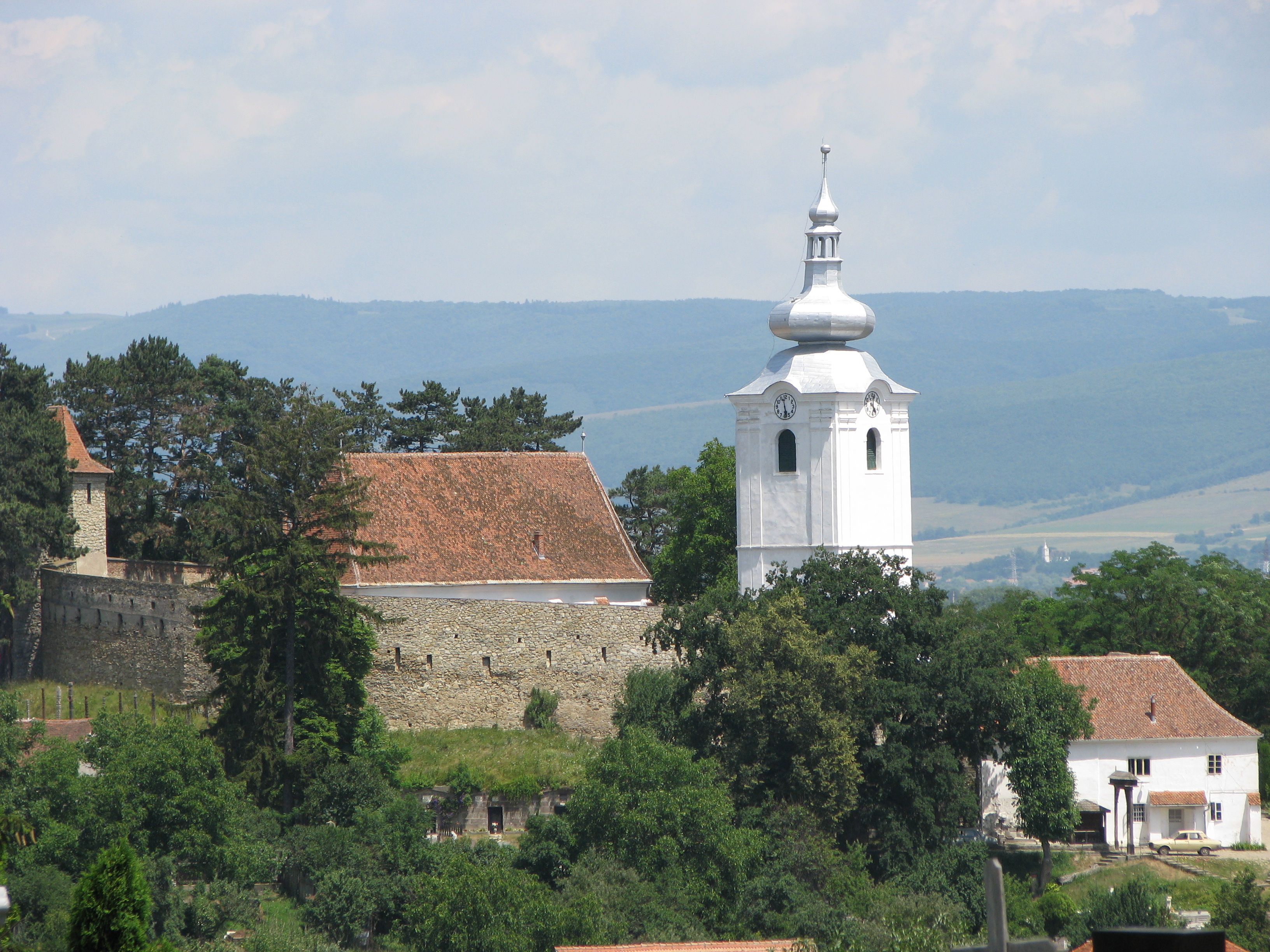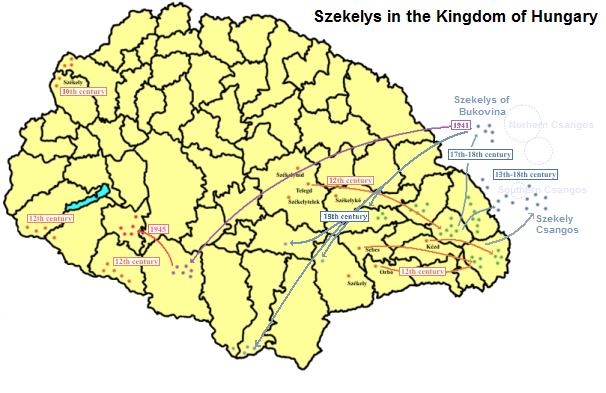|
Vâlcele, Covasna
Vâlcele (, Hungarian pronunciation: ) is a commune in Covasna County, Transylvania, Romania composed of four villages: Araci (''Árapatak'', the commune center), Ariușd (''Erősd''), Hetea (''Hetye''), and Vâlcele. Geography The commune is located in the south-western part of Covasna County, from the county seat, Sfântu Gheorghe, on the border with Brașov County. It is situated at an altitude of , at the foot of the Baraolt Mountains. The Olt River passes through the southern part of the commune. Demographics Vâlcele has an ethnically mixed population. According to the 2011 census, it had a population of 4,292, of which 48.3% or 2,071 were Roma, 39.4% or 1,689 were Romanians, 9.9% or 427 were Székely Hungarians Hungarians, also known as Magyars, are an Ethnicity, ethnic group native to Hungary (), who share a common Culture of Hungary, culture, Hungarian language, language and History of Hungary, history. They also have a notable presence in former pa ..., and 2.3 ... [...More Info...] [...Related Items...] OR: [Wikipedia] [Google] [Baidu] |
Covasna County
Covasna County (, , ) is a county (județ) of Romania, in eastern Transylvania, with the county seat at Sfântu Gheorghe. Demographics In 2011, it had a population of 210,177, making it the second least populous of Romania's 41 counties and the population density was . In 2002 the ethnic composition of the county was as follows: * Hungarians in Romania, Hungarians – 73.58% (or 164,158) * Romanians – 23.28% (or 51,790) * Romani people in Romania, Romani – 2.68% (or 5,973) According to the 2011 Romanian census, 2011 census, the composition of the county was: * Hungarians in Romania, Hungarians – 73.74% (or 150,468) * Romanians – 22.02% (or 45,021) * Romani people in Romania, Romani – 4.05% (or 8,267) * Minorities of Romania, Others – 0.19% According to the 2021 Romanian census, 2021 census, the composition of the county was: * Hungarians in Romania, Hungarians – 71.77% (or 133,444) * Romanians – 22.99% (or 42,752) * Romani people in Romania, Romani – 5.11% ... [...More Info...] [...Related Items...] OR: [Wikipedia] [Google] [Baidu] |
Hungarians In Romania
The Hungarian minority of Romania (, ; ) is the largest Minorities of Romania, ethnic minority in Romania. As per the 2021 Romanian census, 1,002,151 people (6% of respondents) declared themselves Hungarian, while 1,038,806 people (6.3% of respondents) stated that Hungarian language, Hungarian was their mother tongue. Most Hungarians, ethnic Hungarians of Romania live in areas that were parts of Hungary before the Treaty of Trianon of 1920. Encompassed in a region known as Transylvania, the most prominent of these areas is known generally as Székely Land (; ), where Hungarians comprise the majority of the population. Transylvania, in the larger sense, also includes the historic regions of Banat, Crișana and Maramureș. There are forty-one counties of Romania; Hungarians form a large majority of the population in the counties of Harghita County, Harghita (85.21%) and Covasna County, Covasna (73.74%), and a large percentage in Mureș County, Mureș (38.09%), Satu Mare Count ... [...More Info...] [...Related Items...] OR: [Wikipedia] [Google] [Baidu] |
Communes In Covasna County
A commune is an alternative term for an intentional community. Commune or comună or comune or other derivations may also refer to: Administrative-territorial entities * Commune (administrative division), a municipality or township ** Communes of Algeria ** Communes of Angola ** Communes of Belgium ** Communes of Benin ** Communes of Burundi ** Communes of Chile ** Communes of the Democratic Republic of the Congo ** Communes of France ** Communes of Italy, called ''comune'' ** Communes of Luxembourg ** Communes of Moldova, called ''comună'' ** Communes of Niger ** Communes of Romania, called ''comună'' ** Communes of Switzerland ** Commune-level subdivisions (Vietnam) *** Commune (Vietnam) *** Commune-level town (Vietnam) ** People's commune, highest of three administrative levels in rural China, 1958 to 1983 Government and military/defense * Agricultural commune, intentional community based on agricultural labor * Commune (rebellion), a synonym for uprising or revolu ... [...More Info...] [...Related Items...] OR: [Wikipedia] [Google] [Baidu] |
RO CV Valcele 1
RO or Ro may refer to: Businesses and organizations * Ro (company), an American telehealth company * Royal Ordnance, a British armaments manufacturer * TAROM, a Romanian airline, IATA airline code RO Places * Rø, Denmark * Ro, Emilia-Romagna, Italy * Ro, Greece, a small Greek island * Romania Romania is a country located at the crossroads of Central Europe, Central, Eastern Europe, Eastern and Southeast Europe. It borders Ukraine to the north and east, Hungary to the west, Serbia to the southwest, Bulgaria to the south, Moldova to ... (ISO 3166-1 country code RO) Science and technology * .ro, Internet country code top-level domain for Romania * Ro (antigen) * Autoantigen Ro, a protein * Ro (volume), an Egyptian unit of measurement * Radio occultation, a technique for measuring the properties of an atmosphere * Reactor operator, a person who controls a nuclear reactor * Reverse osmosis, a water purification process * Receive only, a type of teleprinter * Anti-SSA/Ro au ... [...More Info...] [...Related Items...] OR: [Wikipedia] [Google] [Baidu] |
Nicolae Colan
Nicolae Colan (; 28 November 1893 – 15 April 1967) was an Austro-Hungarian-born Romanian cleric, a metropolitan bishop of the Romanian Orthodox Church. From a peasant background, Colan completed high school in Brașov, followed by a period of wandering during World War I that saw him in Sibiu, Bucharest, Moldavia, Ukraine and ultimately Bessarabia, where he advocated union with Romania. After the war, he completed university and taught New Testament theology at Sibiu from 1924 to 1936. Entering the clergy in 1934, he soon became bishop at Cluj, remaining there when Northern Transylvania temporarily became Hungarian territory during World War II. In 1957, he advanced to Metropolitan of Transylvania, an office he held for the final decade of his life. Biography Beginnings Born in Araci, Covasna County, his parents were the peasants Nicolae and Ana (''née'' Nema). He attended primary school in his native village before enrolling at Sfântu Gheorghe's Hungarian-language Sé ... [...More Info...] [...Related Items...] OR: [Wikipedia] [Google] [Baidu] |
Romulus Cioflec
Romulus Cioflec (April 1, 1882, Araci – November 13, 1955) was a writer, journalist and activist from Romania. He was the editor in chief of ''Românul'' in Arad and worked for '' Cuvânt Moldovenesc'', a newspaper from Chişinău, where he lived between 1917 and 1926. Biography Romulus Cioflec was born to Maria and Constantin Cioflec on April 1, 1882 in Araci, Vâlcele, Covasna. He attended a school in Câmpulung Muscel, worked for the Romanian Academy (1905–1910) and graduated from University of Bucharest. Cioflec was editor in chief of ''Românul'' (1911–1913). He was married to Antonia, a daughter of Emanuil Gavriliţă. "Romulus Cioflec" Memorial House was purchased in 1998, when the memorial house became the property of the Ministry of Culture and since then was administrated by the Museum of Eastern Carpathians. The memorial house was laid in a relatively short time, with different objects, which even if they did not belong to the writer, manage to re-build t ... [...More Info...] [...Related Items...] OR: [Wikipedia] [Google] [Baidu] |
National Institute Of Statistics (Romania)
The National Institute of Statistics (, INS) is a Romanian government agency which is responsible for collecting national statistics, in fields such as geography, the economy, demographics and society. The institute is also responsible for conducting Romania's census every ten years, with the latest census being organised in 2022. Leadership The head of the NIS is currently Tudorel Andrei, while the three vice-presidents are: * Ioan-Silviu VÎRVA, in charge of economic and social statistics * Marian Chivu, in charge of national accounts and the dissemination of statistical information * Beatrix Gered, in charge of IT activities and statistical infrastructure History Romania's first official statistics body was the Central Office for Administrative Statistics (''Oficiul Central de Statistică Administrativă''), established on July 12, 1859, under the reign of Alexandru Ioan Cuza. The organisation, one of the first national statistics organisations in Europe, conducted its ... [...More Info...] [...Related Items...] OR: [Wikipedia] [Google] [Baidu] |
2021 Romanian Census
The 2021 Romanian census () was a census held in Romania between 1 February and 31 July 2022, with the reference day for the census data set at 1 December 2021. The census was supposed to be done in 2021, but it was postponed due to the COVID-19 pandemic in Romania in order to avoid census takers from getting infected when coming into contact with ill or quarantined people. It was the first census held in Romania in which data was collected online, something that had support among Romanian youth. The census was divided into three phases: one in which personal data of the Romanian population was collected from various sites; another in which the population was to complete more precise data such as religion, in which town halls would help the natives of rural areas to answer the census; and a third one in which census takers would go to the homes and households of those who did not register their data online. Data for this census was planned not to be collected on paper, but inste ... [...More Info...] [...Related Items...] OR: [Wikipedia] [Google] [Baidu] |
Székelys
The Székelys (, Old Hungarian script, Székely runes: ), also referred to as Szeklers, are a Hungarians, Hungarian subgroup living mostly in the Székely Land in Romania. In addition to their native villages in Suceava County in Bukovina, a significant population descending from the Székelys of Bukovina currently lives in Tolna County, Tolna and Baranya County, Baranya counties in Hungary and certain districts of Vojvodina, Serbia. In the Middle Ages, the Székelys played a role in the defense of the Kingdom of Hungary#Middle Ages, Kingdom of Hungary against the Ottoman Empire, Ottomans in their posture as guards of the eastern border. With the Treaty of Trianon of 1920, Transylvania (including the Székely Land) became part of Romania, and the Székely population was a target of Romanianization efforts. In 1952, during the Socialist Republic of Romania, communist rule of Romania, the former counties with the highest concentration of Székely population – Mureș County#His ... [...More Info...] [...Related Items...] OR: [Wikipedia] [Google] [Baidu] |
Transylvania
Transylvania ( or ; ; or ; Transylvanian Saxon dialect, Transylvanian Saxon: ''Siweberjen'') is a List of historical regions of Central Europe, historical and cultural region in Central Europe, encompassing central Romania. To the east and south its natural border are the Carpathian Mountains and to the west the Apuseni Mountains. Broader definitions of Transylvania also include the western and northwestern Romanian regions of Crișana and Maramureș, and occasionally Banat. Historical Transylvania also includes small parts of neighbouring Western Moldavia and even a small part of south-western neighbouring Bukovina to its north east (represented by Suceava County). Transylvania is known for the scenery of its Carpathian landscape and its rich history, coupled with its multi-cultural character. It also contains Romania's second-largest city, Cluj-Napoca, and other very well preserved medieval iconic cities and towns such as Brașov, Sibiu, Târgu Mureș, Bistrița, Alba Iuli ... [...More Info...] [...Related Items...] OR: [Wikipedia] [Google] [Baidu] |



